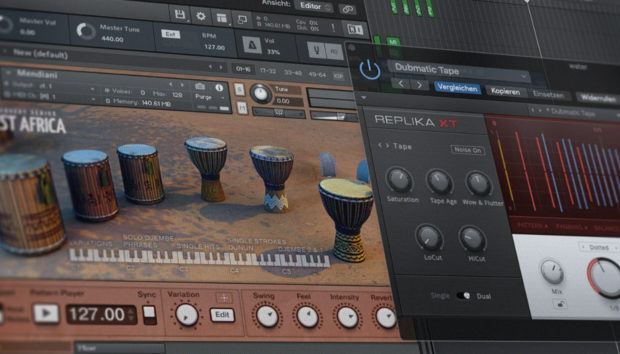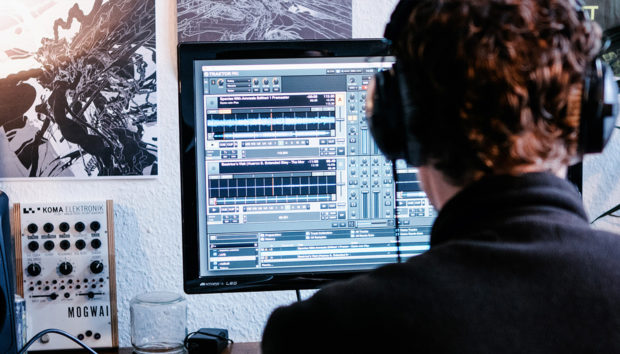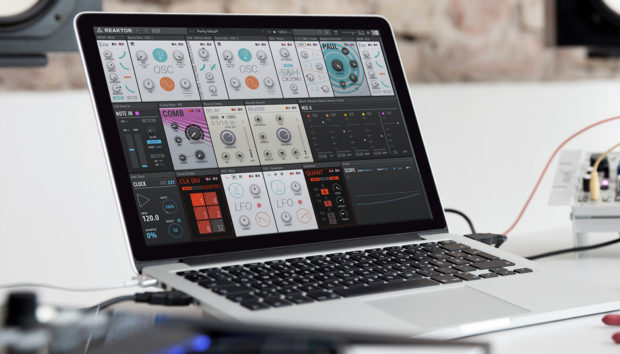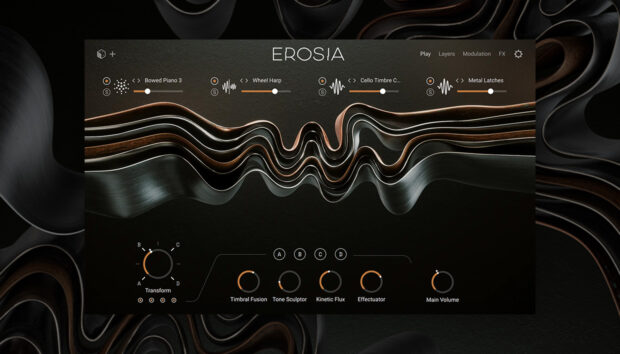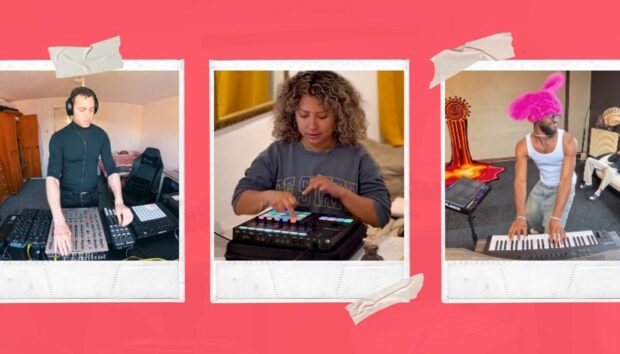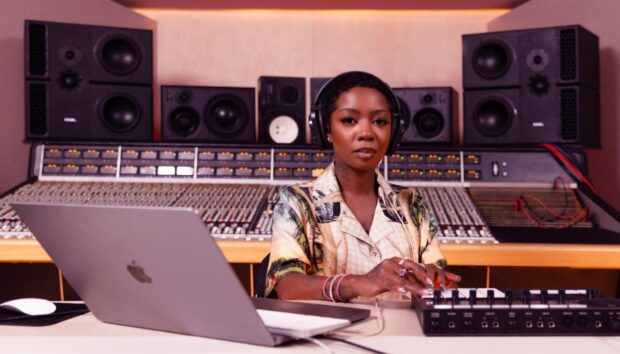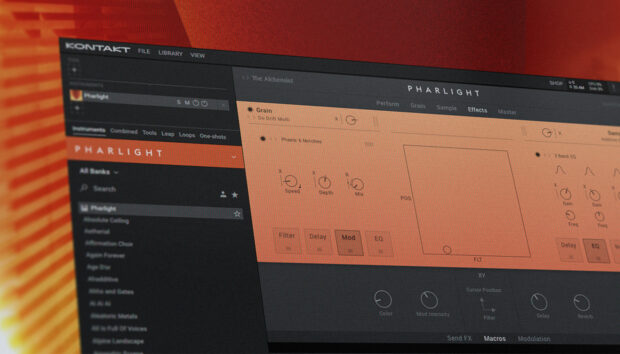Avision’s sound is grounded in years of club experience, early vinyl training, and a sharp instinct for grooves that move a crowd. Born and raised in Staten Island, he honed his skills as a teenager DJing and producing, and that foundation is evident in the way he approaches rhythm: hands-on, human, and full of feel.
His upcoming single “All Over (NYC Mix)” is a return to his roots, channeling the city’s pulse through tight, swinging drum work and bold percussive choices.
At the heart of his drum process is Native Instruments Battery, a tool he leans on not for convenience but for control. Instead of stacking prebuilt loops, he focuses on every transient, layering hi-hats with intention, and using swing to bring breath back into overly mechanical grooves.
Battery gives him the immediacy and flexibility he needs to shape his sound without breaking flow.
Jump to these sections:
- How reverb contributes to the atmosphere
- The role of reverb on pads and textures
- Reverb on lead elements vs percussion
- Using reverb for movement in a track
- Preventing reverb from dominating the mix
- Reverb as a compliment, not a competitor
This interview discusses subtle pitch edits and shaping attacks, and even touches on gluing high-end percussion together to the groove. It’s a practical look at how small drum decisions scale into big room energy.
Do you mostly start your drum grooves from scratch in Battery, or use templates you’ve built over time?
I like to start most of my drum grooves from scratch.

I really want each of my tracks to have their own identity. Templates can speed up the workflow a little, but putting in that extra step usually pays off.
Are you using Battery more for building entire kits, or layering and blending individual hits into the mix?
I like layering and blending individual hits into the mix.
That’s what helps drums pop more. I especially like layering my hi-hats and shakers; they tend to get thicker when you build up that high end.
Pro tip from Avision: Layering your hats and shakers adds weight to the high end and helps the rhythm breathe.
When a loop feels too tight or robotic, what’s your go-to fix to loosen it up without losing impact?
My go-to fix is always swing.

I come from a drumming background, so I play grooves by feel instead of just relying on the computer. That approach gives the track a more real, lived-in feel. If something sounds too computerized, adding swing to your percussion usually helps.
Pro tip from Avision: When in doubt, swing it. Feel over grid.
Do you use pitch-shifting or transient shaping within Battery to achieve more tonal variation from one-shot kits?
I use a lot of pitch-shifting inside Battery.
Sometimes that’s all a sound needs to stand out. I do this especially with percussion – changing the pitch can completely change the role of the sound in the mix. It’s also a way to build identity as a producer. When you tweak little things like that, your sound design starts to stand out.
Pro tip from Avision: Small pitch changes can flip a basic sound into a signature element.
Are there things you’ve figured out in Battery that still shape the way you mix or arrange drums today?
Definitely.
I spend a lot of time shaping the attack and release on different hits in Battery. Sometimes a drum is too long, or hits too hard, and those envelope controls let you dial in exactly how it lands. Over time, using that to shape each sound helps the whole mix sit tighter.
Pro tip from Avision: Fine-tune your envelopes – attack and release matter more than you think.
What’s one piece of advice you’d give to a newer producer trying to build club-ready drums that move the room?
Four-on-the-floor, a bassline that moves, and hi-hats or shakers that make people put their hands up.

Less is more. You don’t always need to keep adding layers – too much can get confusing. Club-ready music is simple. Don’t overthink it.
Pro tip from Avision: Most great grooves are simple. Focus on what makes people move.
Keep your percussion simple for big impact
Big thanks to Avision for breaking down his Battery approach and sharing how years of drumming and club sets shaped his ear. His process is a reminder that groove isn’t something you draw in; it’s something you feel out by getting your hands on it.
Battery gives him the right tools to shape that feeling with precision, letting each element carry its weight without stepping on the others.
Whether you’re building your kits or layering percussion for more energy, Battery’s flexible interface and cell-level control make it easier to work fast while still making wise, deliberate choices. Explore what it can do and see how small shifts in timing, pitch, or envelope can take your grooves to the next level.
